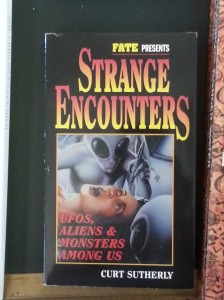I wanted to like The Republic of Thieves. I really wanted to.
I was a latecomer to Scott Lynch’s Gentlemen Bastard series, having read The Lies of Locke Lamora, published in 2006, last year, and finishing Red Seas Under Red Skies in February of this year. The latter, bursting with skulduggery and piracy, was especially strong, and I was impatient for the most recent entry in the series.
Maybe my expectations were too high.
It isn’t that The Republic of Thieves is a disappointment. It’s not; it’s a solidly constructed story and will certainly appeal to diehard Lynch fans. Rather, it lacked a certain cohesiveness, almost as if Lynch wasn’t quite certain which way the story was headed.
The elements readers expect from Lynch are all here: Bosom buddies Locke and Jean engaged in thieving hijinks; another well-developed city-state; wily enemies; scheming; shenanigans; copious quaffing and cursing. It’s all perfectly serviceable, and nothing at which a reader of the series should turn up his or her nose. I’m sorry to have to say, though, that it just doesn’t add up.
Readers of the previous Gentlemen Bastard books are familiar with Lynch’s story structure: Chapters that alternate between the present and the past, the latter shedding light on the former over the course of the book. Lynch maintains this tried-and-true tactic for The Republic of Thieves. The effect here, unfortunately, isn’t cohesive. The flashback chapters serve their purpose of informing the present storyline, but the reader struggles to invest himself (or herself) in it. It isn’t giving anything away to note that some of the characters in the flashbacks have been dead since the first book in the series, which robs the backstory of some of its tension. Likewise, it’s easy enough to guess what’s apt to happen by projecting backwards from the present storyline. The subject matter of the chapters set in the past, the staging of a play along the lines of Shakespeare or Marlowe, is overdone; I found myself skipping pages in these chapters, especially as Lynch related entire excerpts from the play.
The storyline set in the “present” has potential: Locke and Jean travel to Karthain, the city of mages, as political “consultants” for an election. There are many scenes that capture the spirit of the previous books, such as when the thieves sabotage an enemy meetinghouse with an alchemical stinkbomb. Still, the affair seems rushed. The motives of the mages are murky, which may or not be appropriate, and the political wheeling and dealings one might expect become increasingly brief over the course of the book, almost as if Lynch realized that, were he to fully flesh things out, it would add another two hundred pages to the novel and further slow the pace of the story.
It’s not all bad, though. There are things to recommend the book, especially to readers loyal to the Gentlemen Bastards. Locke and Jean are front and center, and are joined by one of their former associates. The setting, the city of Karthain, is as finely drawn as the cities featured in the previous two novels. And there is plenty of blood, guts, sneaking and magic to keep dedicated readers interested. Most significantly, there are major developments at the end of The Republic of Thieves that begin to set the stage for the rest of the series. Readers may or may not be rewarded with insights into Locke’s identity (past and future). A hated character from the past returns. And, most tantalizingly, Lynch drops several hints about major events to come, perhaps involving whatever forces were responsible for removing the mysterious Eldren from the indestructible cities now inhabited by mankind.
What you need to know: If you read and enjoyed The Lies of Locke Lamora and Red Seas Under Red Skies, you’ll probably enjoy The Republic of Thieves. There is less action in this book than in previous novels, but it seems to be setting the stage for subsequent entries in the series. Like most fantasy novels, The Republic of Thieves is long and will require a serious investment of your time. If you haven’t read the other books, you don’t necessarily have to in order to follow The Republic of Thieves, but it will definitely help, as Lynch presumes the reader’s familiarity with the characters and world. Good but not great.














